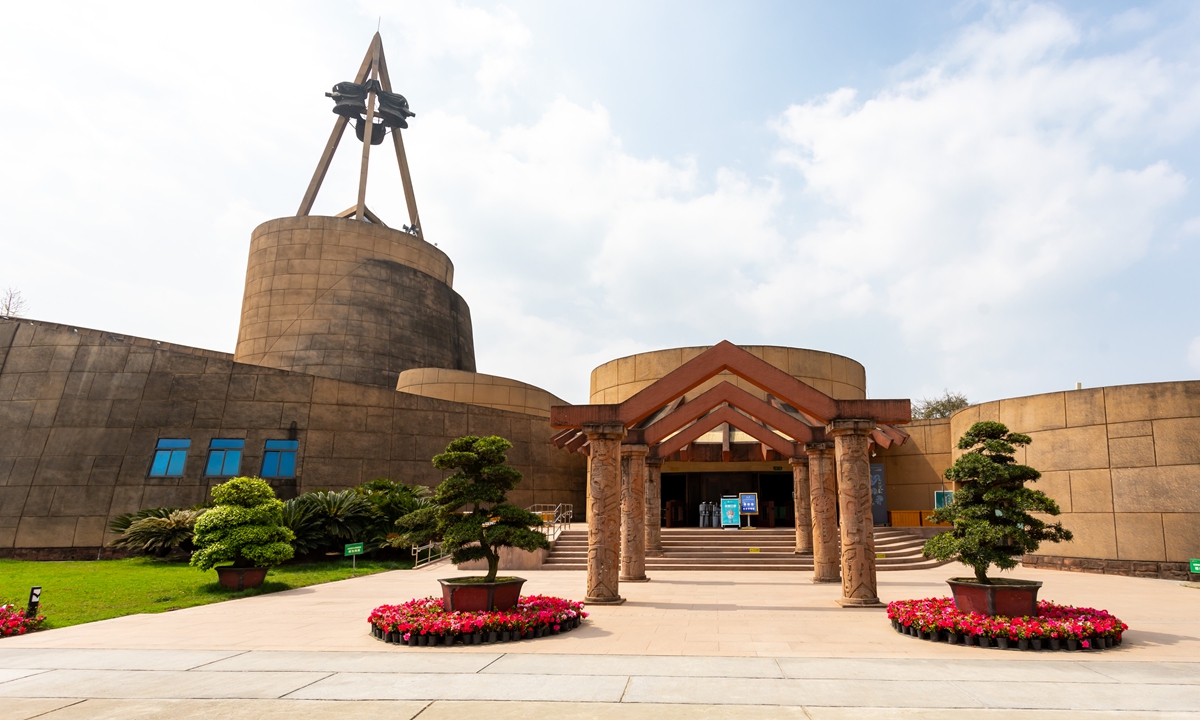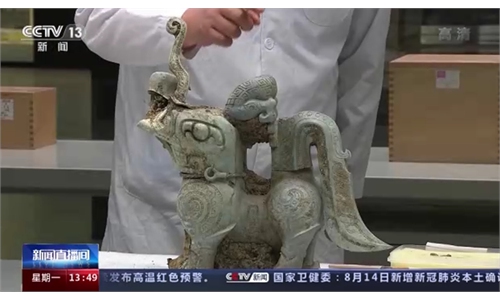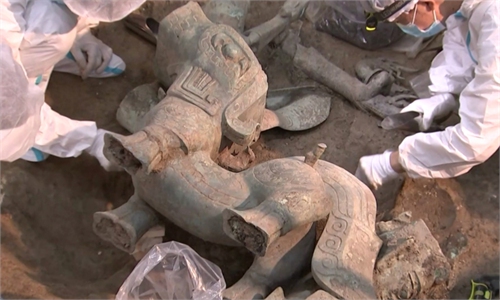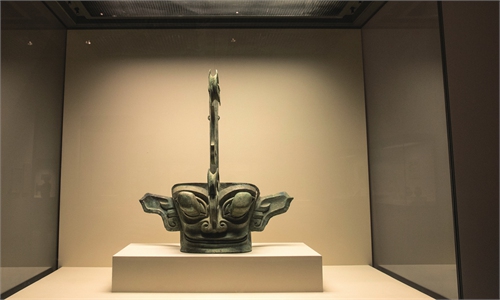ARTS / CULTURE & LEISURE
Sanxingdui Museum sheds light on ancient cultural exchanges

A view outside the Sanxingdui Museum Photo: VCG
Editor's Note:
Through the continuous efforts of several generations of Chinese scholars, major research projects, such as the Project to Trace the Origins of Chinese Civilization, have shown that China's history includes 1 million years of human evolution, 10,000 years of culture and more than 5,000 years of civilization.
Thousands of museums across the country are like stars lighting up the Milky Way that is China's history with their rich collections and exhibits.
In this series, the Global Times will introduce 10 museums from across the breadth and width of China, exploring their contributions to China's diverse, inclusive and continuous civilization.
This third installment of the series brings readers to the Sanxingdui Ruins in Sichuan Province.
"After sleeping for 3,000 years underground, the awakening of these relics shocked the world."
Back in the 1920s, no one could have predicted that an archaeological excavation of some ruins in Southwest China's Sichuan Province would unveil the mysteries of the ancient Shu Kingdom, a state that existed in the province from the 10th century BC to the fourth century BC and directly enriched China's long-lasting civilization.
The history of the ruins, which is named Sanxingdui, after the three large earthen mounds at the site, dates back to about 1250BC, which means it coincided with the Shang Dynasty (c.1600BC-1046 BC) in the Central Plains.
The never-before-seen relics unearthed at the site stunned the whole world, making it one of the world's greatest archaeological finds of the 20th century.
Puzzle pieces
The famed Sanxingdui Museum was later built at the site to display the stunning yet mysterious and unique cultural relics found during excavations.
Lei Yu, curator of the museum, told the Global Times that key highlights of the museum's collection are famous both in China and overseas and include a bronze mask with bugling vertical eyes, a more than 2-meter-tall bronze standing figure and bronze-made sacred tree, all of which date back to 1600BC-1046BC.
As excavation work continues, some new priceless relics have continued to surprise both experts and visitors such as a bronze mask that was showcased at the 2022 CCTV Spring Festival Gala.
The exotic-looking mask, 1.31 meters wide, 71 centimeters tall and 66 centimeters deep, making it the largest ever discovered in China, weighs about 65 kilograms. The artifact is also the best preserved bronze artifact ever found at the site.
High-tech means have been used to carry out research, among which 3D scanning plays an important role.
For example, a bronze figure at the site was successfully assembled with an animal bronze with the help of a 3D model.
The two bronze parts came from different sacrificial pits, but the combination indicated that the two pits were built at the same time.
Archaeologists believe that many fragments of artifacts may be "puzzle" pieces waiting to be put together. For instance, on June 16, 2022, the archaeological team announced that an exquisite and exotic-looking bronze statue excavated from the No.8 sacrificial pit was part of a larger statue, which was unearthed from the No.2 sacrificial pit in 1986.
It took 36 years for this puzzle to be solved.
Some scholars speculate that the artifacts unearthed at Sanxingdui Ruins were deliberately broken before being buried as sacrifices by the ancient Shu people, who dominated the region at the time.
To better promote Sanxingdui culture, the museum held a New Year ceremony focusing on sacrifices and blessings, and combining folk customs and festivals.
Reproducing ancient Shu rituals and music, the museum set up a grand parade for blessings. Coming after three years of pandemic restrictions, this event appealed to many tourists.
According to reports, 116,100 tourists visited the museum during the 2023 Spring Festival holidays, a major rise from the same period in 2019. Tourists aged 18-40 accounted for 48.61 percent of visitors, indicating more people are showing a strong interest in traditional Chinese culture.
Behind this trend is Chinese people's desire to learn more about their profound culture. It also reflects people's enhanced sense of national cultural identity and sense of belonging, Lei told the Global Times.
Ancient connections
"The majority of the wares unearthed at the Sanxingdui Ruins reveals connections to the culture of the Central Plains," Ran Honglin, director of the Sanxingdui Cultural Relics and Archaeology Research Institute, told the Global Times.
Lei pointed out that the Sanxingdui culture, a multicultural part of Chinese civilization, absorbed the characteristics of other cultures, so there is a certain degree of cultural commonality.
The Sanxingdui culture extensively absorbed the bronze casting techniques, ritual systems, decorative aesthetics and jade tradition from the Xia (c.2070BC-c.1600BC) and Shang dynasties in the Yellow River Basin.
At the same time, it was also influenced by the jade artifacts from the Liangzhu culture in the lower reaches of the Yangtze River, and the gray and white pottery, wall-building and rice-growing techniques from the Shijiahe culture in the middle reaches of the Yangtze River.
The system, techniques and specific utensils of the Sanxingdui culture show a profound connection between the Shu civilization and other ancient civilizations in China.
The Sanxingdui Ruins changed the Western world's perception of Chinese civilization. They realized that China has a more extensive and older civilization than previously thought. The discovery of Sanxingdui Ruins also highlighted the great contributions Chinese civilization has made to civilizations around the world, experts noted.




